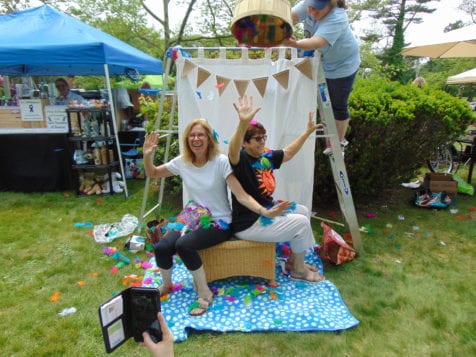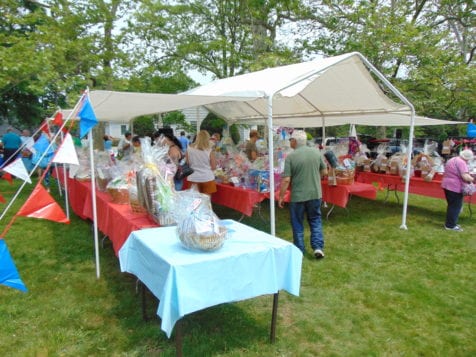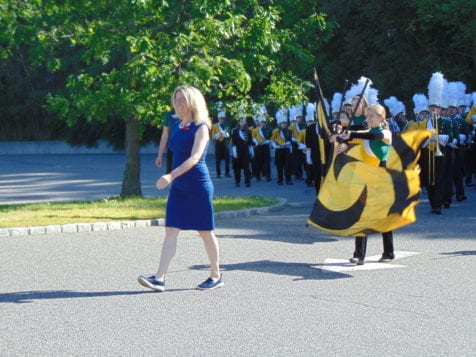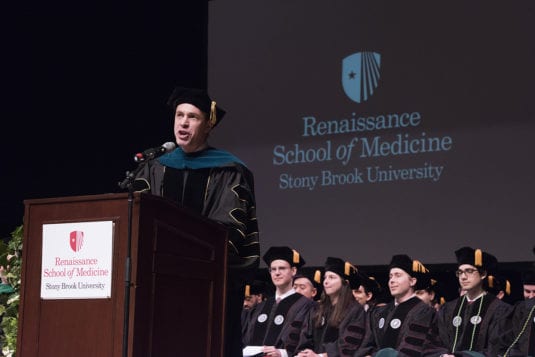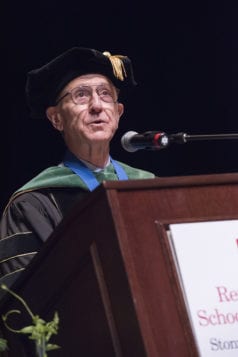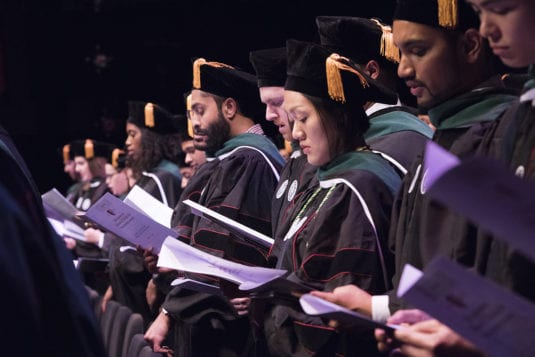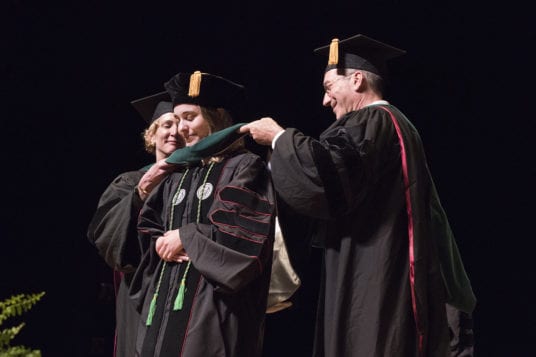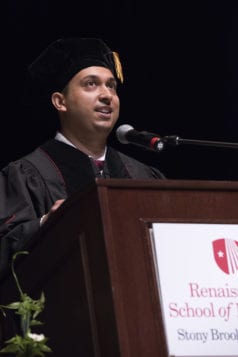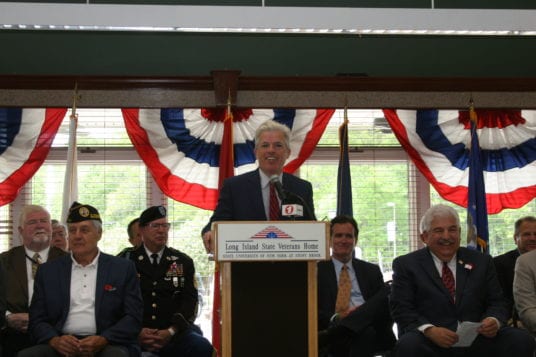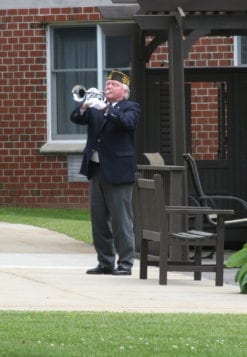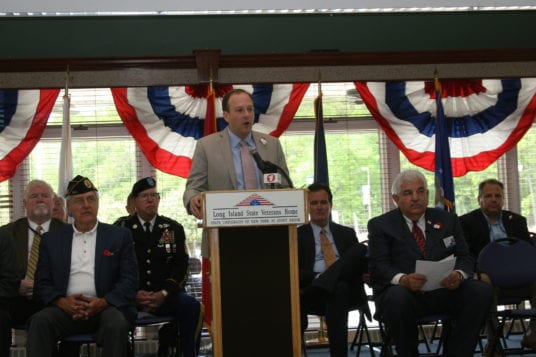With decades of history in the Three Village area, a religious organization is ready to flourish in a new venue.

Nestled on Nicolls Road, a new building designed by Natalie Weinstein & Associates of St James is near completion for Chabad at Stony Brook which currently works out of Lake Grove. A ribbon cutting will be held June 23 to mark the beginning of a new era for the organization with a larger home for those it serves to gather in, along with a new moniker — Village Chabad.
The original name, Chabad at Stony Brook, came about 32 years ago when Rabbi Chaim Grossbaum and Rivkie Grossbaum, co-directors, moved from New Jersey and first worked with Stony Brook University students. Soon, the Chabad services extended beyond the school and into the Three Village community and surrounding areas, with a synagogue, preschool, Hebrew and elementary schools, activities for children and adult education.
“Thirty-two years ago, it started with the university, but over the years it developed into a vast array of broad programming,” said Grossbaum’s son Rabbi Motti Grossbaum, program director.
During a recent tour of the new building, the Grossbaums, who provide services with Rabbi Shalom Ber Cohen, director of education, said the Chabad outgrew its space in Lake Grove. Many programs had to be held at places such as the Bates House in Setauket, the Holiday Inn Express at Stony Brook and many other rentable spaces in the Three Village area due to lack of space.
“We were literally bursting at the seams there, which is why when we had to rent larger venues for community functions we rented up here in the Three Village area,” Motti Grossbaum said.
Chaim Grossbaum likened the new building to a village where everything a Jewish family needs would be under one roof. Like the Lake Grove location, Rivkie Grossbaum, preschool director; Chanie Cohen, program coordinator; Chaya Grossbaum, camp coordinator; and Rivka Itzhaky, secretary and accounts payable/receivable, will join the rabbis.
“It would bring the community together as a village,” he said. “Whether they’re coming for the elementary school or coming for a holiday party, they’re coming home. They’re coming for prayer services or simply to relax with a friend over a cup of coffee. It’s the same home.”
The 13,000-square-foot Village Chabad sits on 8.8 acres of property, and 2.8 acres of it has been developed with a wooded buffer. There are classrooms, study rooms, a sanctuary, offices, a conference room, backyard, patio and a room that can hold 200 for events such as bat and bar mitzvahs and holiday dinners.
“This has been a community effort of many people who have stepped up and catapulted this whole project to happen.”
— Chaim Grossbaum
The rabbis said the new location would make it easier to serve the Jewish community who reside close to and on the North Shore. Many who attend services and activities at the Chabad are residents in the Three Village school district as well as Smithtown and Port Jefferson. The Chabad is open to anyone of the Jewish faith of any affiliation or background and membership is not required.
“The concept of Village Chabad is the wholesomeness that the Jewish community needs will be here,” Chaim Grossbaum said.
While the Chabad still holds a mortgage with Gold Coast Bank for the $5 million project, the rabbis said a number of sponsors, both big and small, stepped up to fund parts of the new building, including lead donors Edward and Vivian Merrin, owners of The Merrin Gallery in New York City, whose contribution kicked off the donations. Opportunities are still available for sponsorship as the Chabad hopes to finish a kitchen, install a playground for their school and a swimming pool for summer camp.
“This has been a community effort of many people who have stepped up and catapulted this whole project to happen,” Chaim Grossbaum said.
In addition to the rabbis, those who have attended services and events are looking forward to their new home. Cheryl and Bruce Singer, of Stony Brook, who have been involved with the Chabad for approximately four years, are among them.
“We look forward to having a modern building that provides a central hub for the Jewish community to learn, gather, worship, celebrate and participate in social and cultural events for all ages,” Cheryl Singer said.
Jennifer O’Brien, an insurance agent in Smithtown who travels to the Chabad from Hauppauge, said it has been nice to see it expand.
“Their new location looks like it will be the most upscale synagogue in our area as the floor plans are impressive to say the least,” O’Brien said. “My children loved attending Hebrew school at their former location in Lake Grove, and we are so excited for all that the grand opening and new accommodating space will offer a synagogue, school and camp.”
Andy Polan, president of the Three Village Chamber of Commerce, said the new building “shows that our Jewish community is vibrant and growing.”
“It was Chabad’s outreach that inspired me to become more engaged with my Judaism and to take on leadership roles in our Jewish community,” Polan said. “These are experiences that will impact me forever.”
Motti Grossbaum said the Chabad currently serves about 500 active families and the move gives the Chabad the opportunity to benefit many more residents.
“We’re part of people’s lives, and we’re trying to bring meaning and purpose and to remind people that beyond the chaos of our day-to-day life, we all have a collective mission to make the world a better place every day,” Motti Grossbaum said.
The ribbon cutting will be held June 23 at 1 p.m. at the new building located at 360 Nicolls Road, East Setauket. Registration is required by visiting www.myvillagechabad.com.

